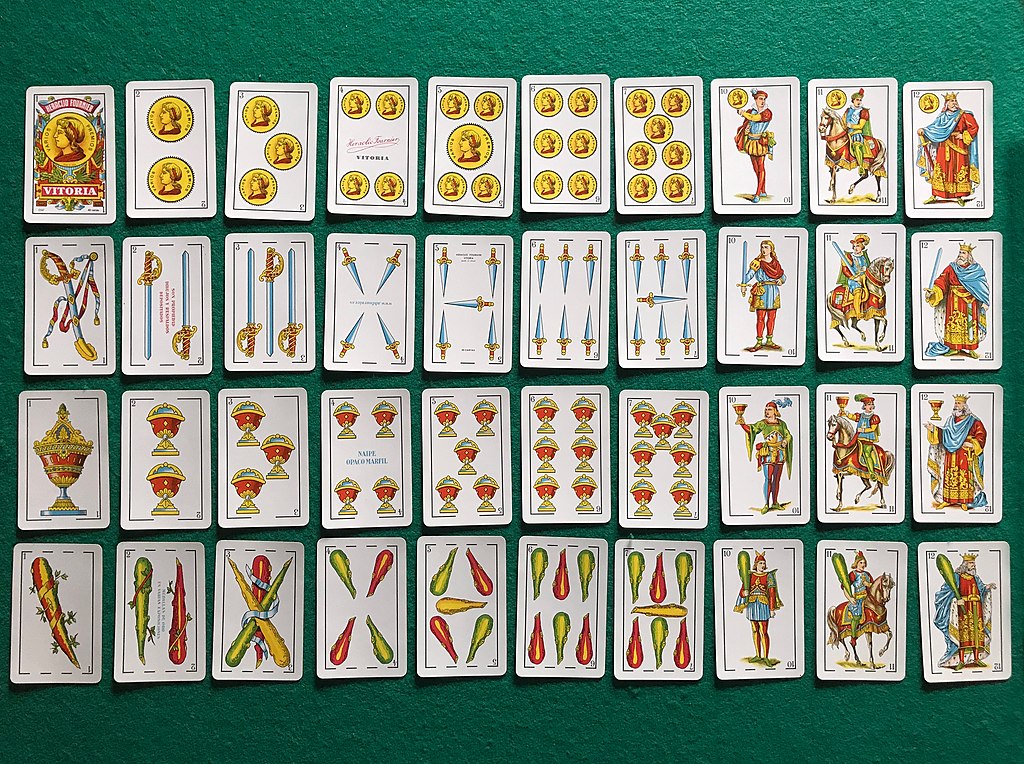The Weekender, February 26, 2021
Hi!
Earlier this week, I found something really interesting to write about — and then I hit a dead end. I’m going to share the story here and make a request: if you have an explanation, please share it with me. Not a theory — I have plenty of those — but an answer. With sources, etc.
The story or, I guess, the question: Why is ♣ called a “club”?
In the U.S. at least, playing cards come in decks of four suits — hearts, diamonds, clubs, and spades. The diamonds (♦) and hearts (♥) are in the shape of what we typically refer to as diamonds and hearts, respectively. (Put aside that diamonds, as in the stones, aren’t shaped like that, and our hearts, as in the thing in our bodies, isn’t shaped like the corresponding shape either.) Spades (♠) look like the garden tool called a spade — or so I thought. (We’ll revisit that shortly.) But there’s nothing club-like about the ♣ symbol. It looks more like a little tree than something you’d use to club someone over the head.
So I started investigating, wondering if there’d be a good story here for Now I Know. And it was immediately promising. Here’s what Wikipedia says:
Its original French name is Trèfle which means “clover” and the card symbol depicts a three-leafed clover leaf. The Italian name is Fiori (“flower”). The English name “Clubs” is derived from the suit of Bastoni (batons) in Italian-Spanish suited cards.
Pretty straightforward, right? The ♣ symbol comes from French decks, and those decks called the suit “clovers” (to use the English translation). However, Italian-Spanish decks used batons, also known as clubs. So we took the image from the French decks and the names from the Italian-Spanish one and combined them.
But… why would we do that? Or, more accurately, how did that happen? Why not just call them clovers if we’re going to use the ♣ symbol? Or what not just use a baton-shaped symbol if we’re calling them “clubs”? It doesn’t make any sense to pick the picture from one deck and the name from the other.
So, I kept looking — and it gets even stranger. Here’s what a deck of Italian-Spanish cards looks like. (As this is based on older Italian decks, I’ll just call this “Italian” from here on out.)

No hearts. No diamonds. No spades (kind of). But yes, there are clubs. Just not ♣ clubs. The four suits coins, cups, swords, and (non-clover) clubs. On the other hand, if you look at French decks, you end up with the four shapes I’m familiar with, but with some differences in names. Hearts are “cœurs,” which translates to “hearts.” Diamonds are “carreaux,” which translates to “tiles,” but “diamonds” probably is a reference to the shape, not the gemstone, so that’s not terribly off. In any event, neither of them matches with “cups” or “coins,” either in shape or in name. For the two red suits, e’ve adopted both the symbol and the name from the French.
For the black suits, though, it gets tricky. As already discussed, “clubs” take their name from the Italian but the symbol comes from the French. “Spades” may be the same. The ♠ symbol is indubitably from the French decks. The name, though, is unclear. The French word for ♠ is “piques,” which translates to either “pikes” or “spades.” The Italian deck shows swords, and the Italian word for “sword” is “spada.” The plural of “spada”? “Spade,” pronounced like “spa day.” But the spelling is what we call ♠ in the United States.
So the net result is this: Hearts and Diamonds get both their name and symbol from the French, Spades get their symbol from the French but it’s not clear where the name comes from, and Clubs get their symbol from the French, too, but their name clearly comes from the Italian. How that happened, though, I don’t know — and try as I might, I couldn’t figure it out. I can come up with a lot of theories, none of which are particularly good, and regardless, I have no evidence to support any of those theories. If you have a source that will help shed the light on why ♣ are called “clubs” and not “clovers,” please share!
The Now I Know Week in Review
Monday: The Not-Quite-Vice-President Who Was Almost Accidentally President. Early U.S. elections were so bad, it’s amazing the nation survived its infancy.
Tuesday: The Soviet Plan to End the Weekend. In Soviet Russia, there’s no Now I Know Weekender, I guess.
Wednesday: How Smoking Gave PEZ a Boost: PEZ are weird anyway. They’re mediocre candy that are hard to eat and come with a not all that fun toy. The trivia here is good, though.
Thursday: The Blues for Some Boo-Boos: The tale of a bandaid designed to keep your customers safe.
And some other things you should check out:
Some long reads for the weekend.
1) “Why We Can’t Make Vaccine Doses Any Faster” (ProPublica, 8 minutes, February 2021). An answer to the question we’re all asking.
2) “The Taste Makers” (The New Yorker, 42 minutes, November 2009). The subhead: “The secret world of the flavor factory.”
3) “The Century-Old Neon Sign Tearing Up LA Conservationists” (Vice, 18 minutes, January 2021). Past meets present in a strange story that features the sentence “This is where the hot chicken man comes in.”
Have a great weekend!
Dan
